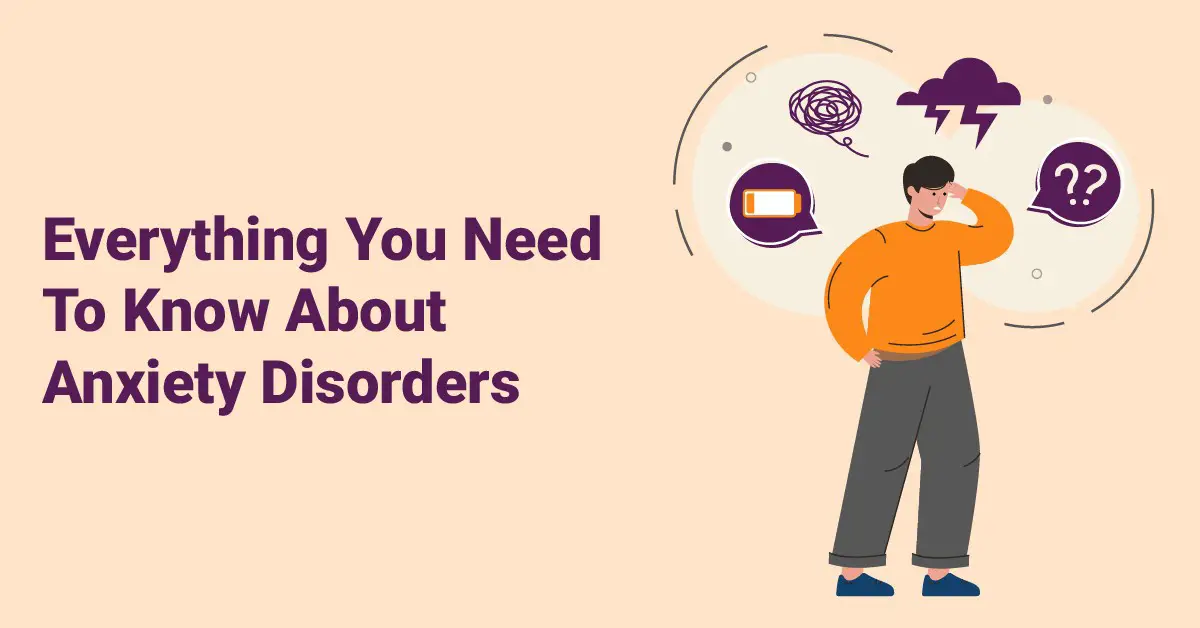As a BetterHelp affiliate, we receive compensation from BetterHelp if you purchase products or services through the links provided
More and more research has been put into anxiety disorders. As we recognize more aspects of these medical conditions, doctors and medical professionals can give more patients a clear diagnosis.

As 6.8 million U.S adults have been diagnosed with Generalized Anxiety Disorder, we have a larger scope of people to help identify symptoms and common denominators. With so many people suffering from the same issue, more research has been funded to help create treatments.
Using the information researched by scientists worldwide, we will explain everything you need to know about anxiety disorders.
What Exactly Is Anxiety?
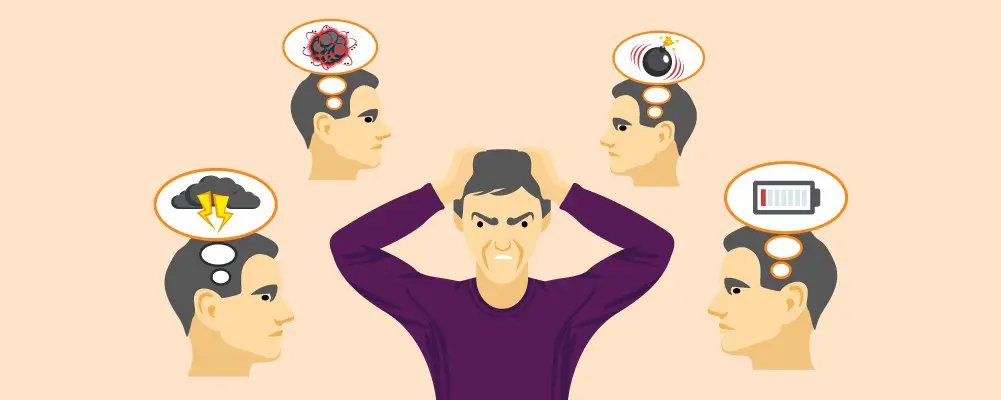
Anxiety is an emotion, and like all emotions, it is caused by your body’s hormones reacting.
Anxiety is your reaction to stress to an actual or perceived danger. It can make you feel worried, scared, or uneasy. Anyone can feel anxious for any reason. The most common reasons are exam nerves, job interviews, medical tests, and meeting new people.
This reaction is expected as your body prepares for something that could harm you. It is making you aware of your surroundings so that nothing can surprise you in this state.
However, the feeling of anxiety should leave you once the danger is gone. People with anxiety disorders aren’t able to let go of their worries.
But, this is an oversimplification of their situation. Let’s go into more detail.
An individual might become so worried and fearful that they cannot breathe. Their reaction isn’t helping them stay alert, instead, they are becoming overwhelmed. This is a panic attack.
Perhaps the person creates a negative emotion about the activity, which causes them great fear. Now they cannot go back into that situation without re-creating that fear. This is a phobia.
The individual may not even need a trigger to cause a flare of anxiety. Instead, anxiousness and worry creep into their minds, attacking them without warning. This is a generalized anxiety disorder.
There are many different types of anxiety disorders, and our short descriptions above barely scratch the surface of how they operate.
When Is Anxiety A Mental Health Problem?
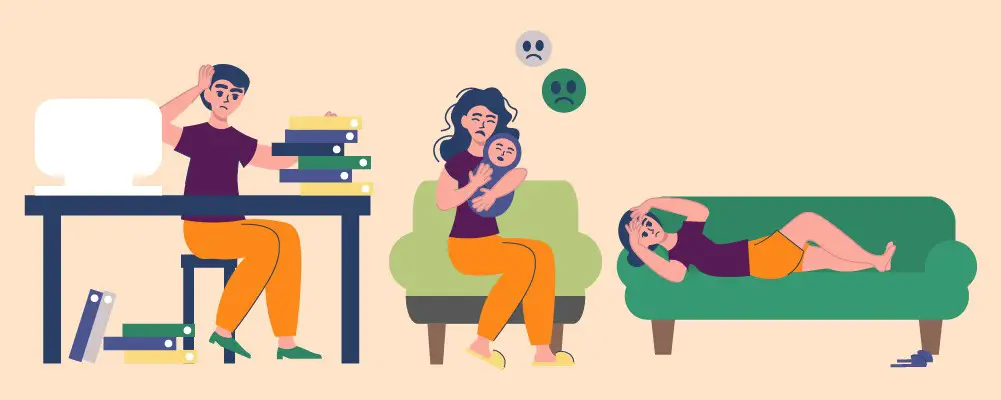
So at what point is your anxious feeling no longer healthy?
You can’t count how many times you felt anxious and then measure these numbers against the national average. Emotions are too fluid for us to simply count them. Instead, you should look inside yourself and consider the following:
How Long Has The Feeling Lasted For?
Depending on the reason for your anxiety, there will be a reasonable amount of time in which you feel anxious. Using exams as an example, it’s normal to feel worried as you wait for the papers to arrive on your desk, and it’s normal to feel worried as you wait for the results to come back.
However, if your anxiety about the test has been going on for a week before the test is due, or you are panicking from the time you took the test until its results are released, this isn’t healthy.
Putting yourself through a week’s worth of stress will take a toll on your body, making you tired, strained, and disrupting your hormone imbalance.
A couple of hours of stress, in this situation, is expected, a day or more is harming your body.
Are Your Fears In Proportion?
Next, you should consider if your fears are proportional to your situation. People with anxiety-based mental health problems often see a situation as more dangerous than it is.
For example, making a minor social mistake with your friends should only cost a momentary embarrassment or an apology to solve the problem. However, people with anxiety may replay this issue in their heads for days or months. They may become convinced that the minor issue is tearing their friendship apart.
In this situation, the mind is going into survival mode, trying to fix something that wasn’t broken.
You Are Avoiding Situations
In the same example, you may become convinced that your friend no longer likes you. The situation makes you anxious, so you avoid any areas they might be in – their workplace, zip code, or even going to school.
To avoid this anxious situation, you’re reducing your freedom and hiding your daily life. If this sounds like you, you may have anxiety.
Your Life Is Filled With Worry You Cannot Control
If you can look back at your last week, month or year and say that most of the time was filled with anxiety, your mental health is becoming a problem.
If you don’t think your life is being overtaken by multiple days of stress, however, when you are stressed, you cannot control your feelings, your mental health is becoming a problem.
Constant or extreme anxiety shows that your body cannot regulate stress hormones.
Different Types Of Anxiety Disorder
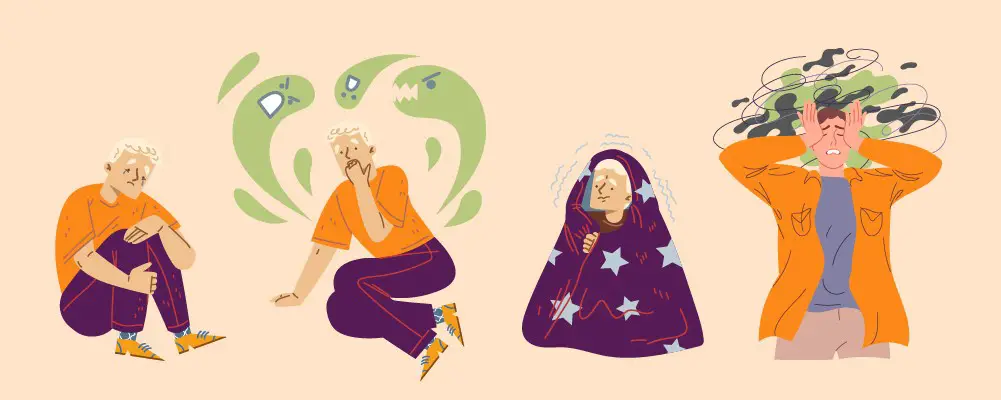
There are many different types of anxiety disorders. Here we will discuss the most common, explaining what they are and their mental and physical symptoms.
Generalized Anxiety Disorder
Generalized anxiety disorder is often abbreviated to GAD. It is the most common type of anxiety disorder, as 5.7% of U.S adults have experienced it in their lifetime.
People with GAD often constantly feel anxious or have multiple daily episodes. Even if they don’t feel anxiety every day, people with GAD will experience negative emotions more often.
The physical symptoms of GAD are:
- Feeling on edge or restless
- Feeling fatigued or tired constantly
- Aching muscles due to tensing them from stress
- Increased heart rate
- Shortness of breath
- Nausea and diarrhea
- Trembling and twitching
- Sweating
- Difficulty sleeping
The mental symptoms of GAD are:
- Having constant anxiety for longer than 6 months
- Finding it hard to manage worry
- A sense of impending danger
- Easily irritable
- Mind going blank or finding it hard to concentrate
- Difficulty with memory
Panic Disorder
Panic disorders are when you feel a rush or overwhelming anxiety. It can easily be compared to a heart attack, as those going through this attack feel both physical pain and an instinctive sense of doom.
Not only does this disorder seem to come in waves of intensity, but there is less likely to be a trigger. This means avoiding things that worry you will not help you avoid the rush of anxiety.
Instead, those with a panic disorder need to rest and keep themselves safe during the attack. It usually lasts for a minute before you can return to a calmer state of mind.
The attacks can happen at any time, and it isn’t uncommon for people to experience GAD in response to their panic disorder.
Around 2.7% of U.S adults have a panic disorder, which is more likely to affect women than men.
The physical symptoms of panic disorders are:
- A pounding or rapid heartbeat
- Shortness of breath
- Chest pain
- Sweating
- Lightheadedness
- Stomach aches
- Aching muscles
The mental symptoms of panic disorders are:
- Feeling disconnected from yourself or reality
- Immense and sudden fear of no control
- Immense and sudden fear of death
- Immense and sudden fear of something bad happening
Social Anxiety Disorder
Social anxiety disorder is when a person is overly worried about being judged in a social situation or becomes overly embarrassed about their actions when around others.
Around 7.1% of U.S adults have a social anxiety disorder, and women are more likely to develop this disorder than men. However, teenagers are most likely to develop this disorder. This is because teenagers are at a stage in their life where social interaction is pivotal to their cultural ideas of success.
Being well-liked among their peers, following the social hierarchy, and crossing the social boundary from child to adult, are critical points of their life. Getting this wrong can lead to being an outcast in schools and in friendships.
Due to this social intensity, social anxiety disorders can be created. People with this disorder are worried that their peers will view them negatively. Being seen as weak, dull, stupid, and even anxious is something they want to avoid.
This means that many people with a social anxiety disorder will hide their anxious state of mind as they try to remain undetected by their peers. As you will see from the symptoms listed below, in an attempt to hide their fear, people with social anxiety disorder often overcompensate and fully immerse themselves in the social situation to hide their unease.
The physical symptoms of social anxiety disorder are:
- Blushing
- Sweating
- Trembling
- Rigid body language
- Poor eye contact or too much eye contact
- Stuttering
The mental symptoms of social anxiety disorder are:
- Shyness when around people
- Either revealing too much about yourself or not joining in a conversation
- Fear about joining social situations
- Overly worried about how others perceive you
Separation Anxiety
Separation anxiety is when an individual creates an irrational worry when they are away from a singular person or group of specific people. This anxiety is most common in children who have not assimilated into society.
This may be due to their lack of experience in the world and seeing their family members as clear signs of safety, whereas everything else is new and scary.
During the COVID pandemic, schools and parents reported increased separation anxiety in children. This was due to the intense amount of time we were forced indoors. As children were taught from home and parents often worked from home, children had less chance to interact with people outside of their family.
Of course, it’s not just children who suffer from separation anxiety. Around 77.5% of adults with separation anxiety developed their disorder as adults.
The physical symptoms of separation anxiety are:
- Difficulty sleeping away from the person or people you’re intensely connected to
- Panic attacks (see above information about panic disorders)
- A pounding or rapid heartbeat
- Shortness of breath
- Chest pain
- Sweating
- Lightheadedness
- Stomach aches
- Aching muscles
The mental symptoms of separation anxiety are:
- Unfounded fear that your loved one or loved ones will be harmed, killed or taken when away from you
- Fear around leaving your loved one’s proximity
- Planning your time to avoid being away from your loved one or loved ones
- Depression when apart from your loved ones or loved one
- Anxiety when apart from your loved ones or loved one
Specific Phobias
Phobias are when a person has a fear about something unrealistic to the danger they cause. The fear has to be overwhelming and even debilitating to move from a simple fear to a phobia.
For example, the UK has no deadly insects to be aware of. Being afraid of a spider isn’t logical in that country. However, fear isn’t enough to have a phobia. If a person couldn’t move out of their room as a spider blocked their path, this would be a phobia.
Similarly, if a person in the UK starts crying, feels sick, or becomes lightheaded, their stress response is too large to be a simple fear. They will have a phobia of spiders.
However, this reaction in Australia, where spiders can be deadly, is realistic. For someone in Australia to have a phobia of spiders, they will need to have physical symptoms stopping them from functioning as usual.
The physical symptoms of a phobia are:
- Feeling dizzy or lightheaded when thinking or seeing the object of your phobia
- Sweating
- Nausea
- Heart palpitations or an increased heart rate
- Shortness of breath
- Trembling
The mental symptoms of a phobia are:
- Anxiety around seeing the object of your phobia in likely and unlikely places
- Avoiding areas where your phobia may be
Agoraphobia
Agoraphobia is often mistaken for fear of the outdoors, but this fear is more nuanced. Agoraphobia is the fear of being trapped or helpless. People with this fear often panic attacks when they are in a crowd of people, in very large or very small places, and then standing in a line.
While surrounded by people who cannot find an exit, their fight or flight response kicks in to help them escape. However, with nowhere to escape to, their anxiety increases.
This means those with agoraphobia find it hard to be in public spaces or large open areas like a field. Without treatment and understanding, they can quickly become locked in their home.
The mental symptoms of agoraphobia are:
- Unable to leave your home by yourself
- Developing a panic attack in crowds or open spaces
- Developing a phobia of enclosed areas such as elevators and movie theaters
- Showing distress in social situations
- Irritation towards crowds
- Fear of becoming lost or trampled
Obsessive Compulsive Disorder
Obsessive Compulsive Disorder is another mental health condition many people incorrectly understand. Often abbreviated as OCD, this disorder is not the urge to clean or have everything ideally in alignment. Instead, OCD is when a person receives intrusive thoughts that lead them to make obsessive actions or obsessive thoughts.
For example, a person with OCD may think, “turn the lights on five times in 5 seconds, or something bad will happen”. The thoughts don’t have to be rational, and the person with OCD often knows that the concepts don’t make sense. However, the fear of the adverse side effects can be overwhelming. This forces them into completing their obsessive compulsions to ease their anxiety.
Intrusive thoughts are common. Thinking “jump into the road” or “slip down the stairs” is our brains telling us of danger and making us aware of the negative impacts. However, experiencing these thoughts daily and needing to complete them is where the common issue turns into a mental health disorder.
The mental symptoms of OCD are:
- Spending a significant amount of time with the obsession or compulsion
- Daily life and relationships are impacted by obsessions and compulsions
- Having no real control over your thoughts or behaviors
- Feeling a sense of relief once the obsession or compulsion has been completed. This relief is for the completed activity, not the activity itself.
Anxiety Disorder Symptoms
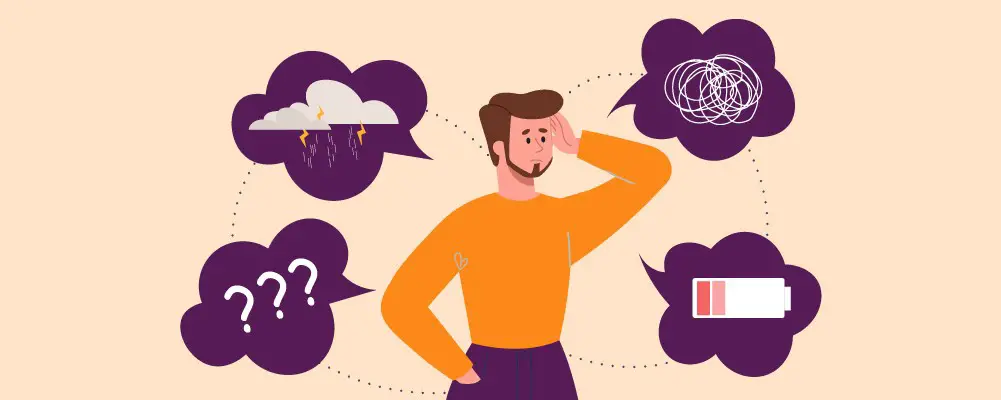
A lot of anxiety disorders have the same symptoms. What differentiates them is how we deal with the anxiety, how it manifests, and what triggers them. All of that information is detailed above, however, sometimes, the real battle is figuring out if you’re anxious at all.
Unsurprisingly, many people with anxiety disorders often fail to get the help they need. 75% of anxiety sufferers are not getting proper care. One of the main reasons for this is because they don’t want to be a burden to others, have others judge them, or feel watched – all symptoms of a person with anxiety.
In most cases, to get the help, you need to admit you need it. To admit you need help means letting someone see you struggle. This is their literal worst nightmare for people with social anxiety or GAD. Use the list below to help you recognize your symptoms of anxiety.
The common symptoms of anxiety disorders are:
- Hyperventilating
- A sense of panic or fear often – either every day or every week
- A sense of danger with no logical cause
- Problems sleeping
- Being unable to calm yourself
- Tingling hands and feet
- Sweaty
- Numbness
- Heart palpitations
- A dry mouth
- Feeling sick or nauseous
- Tense or tender muscles
- Dizziness
- Being unable to stop thinking about a problem
- Finding it hard to concentrate
What Causes Anxiety?
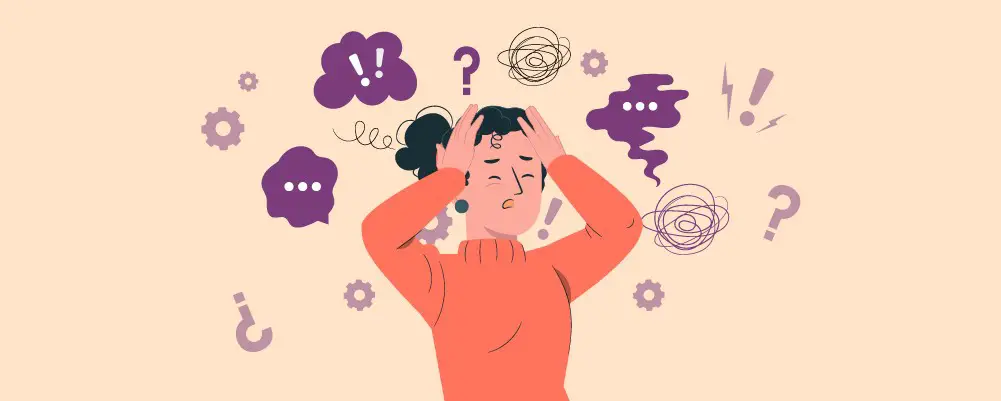
Anxiety can be developed at any point in your life, but they often need two things to be triggered – a biological disposition and an environmental reaction.
The biological disposition means having a neurochemical imbalance created through your genes. It’s common for mental health disorders to be hereditary, which means people biologically connected to you have a higher chance of developing the disorder.
Overstimulated neurotransmitters in our brains characterize the biology of anxiety. The prefrontal cortex (responsible for interpreting threats and responses) works harder than it should. This means your alarm system telling you to hide, run, and act protectively is being rung at the slightest hint of a problem. Your brain is jumping to conclusions in an attempt to sense threats.
The other element of anxiety is the environment. If someone is put into a stressful situation, the impact can change their brain chemistry, making it difficult to process what has happened.
For example, someone who has witnessed a traumatic event may develop a disorder due to the stress they underwent.
This can happen due to one large stressful event or multiple smaller ones. For example, someone could develop an anxiety disorder due to multiple instances of low-level bullying. The bullying may not have caused an issue, but a disorder could be produced after a year of the same treatment.
How Is Anxiety Treated?
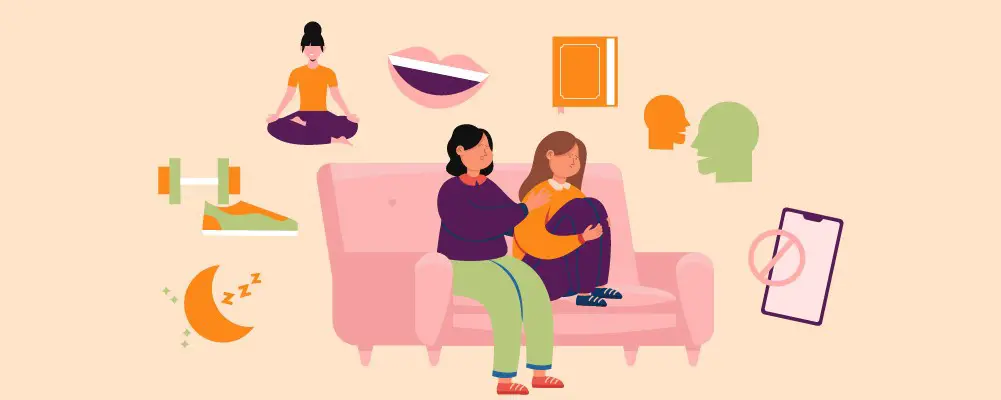
There are three main methods to treat anxiety disorders – therapy, medication, and at-home activities to lower stress.
Therapies
The most common therapy-based treatments for anxiety are cognitive behavior therapy (CBT), talk therapy, interpersonal therapy (IPT), and acceptance commitment therapy (ACT).
In CBT the therapist will use a range of distraction and distancing techniques to help you find the source of your anxiety and perceive it for what it is. In addition, the treatment is designed to help you behave and think differently about the negative thoughts in your mind.
In talk therapy, you work with the therapist or a group of people to discuss your issues. Sometimes, having a safe place to discuss your worries is enough to remove their power over you. In addition, the therapist can monitor the conversation and ensure you won’t be triggered by the topics discussed.
IPT only works as a short-term treatment to help relieve symptoms of anxiety. In addition, it only works for current or newly formed anxiety, not childhood anxiety. In this therapy, you work on understanding how your anxiety affects your life.
Lastly, ACT is a behavioral therapy where you practice mindfulness and acceptance. The idea is to give you the tools to manage your anxiety and stay present when an attack happens instead of becoming overwhelmed.
Medication
The most common medication for anxiety is selective serotonin reuptake inhibitors – also known as anti-depressants and SSRIs.
They work by managing your serotonin levels – the brain chemical that affects your mood and memory. It can also work as a mood stabilizer. For people with depression, the added serotonin helps them digest and create happy feelings. But for those with anxiety, the hormone allows them to regulate their overactive mind and make room for rational thought.
Due to the instant and easy release from anxiety, it can be easy to form an addition to the medication. And if the cause wasn’t biological but environmental, then the treatment will only help the symptoms but not the root of the issue.
There are multiple SSRIs, the most common being Citalopram, Escitalopram (Lexapro / Cipprolex), Fluvoxamine, Parxamine, Fluoxetine, and Sertraline.
Lowering Stress
If you suffer from an anxiety disorder, you should talk to your therapist about the best methods to help you relax. They will understand what methods are the most triggering and the most effective for you.
However, we have some tips to help you with at-home relief and daily de-stressing activities.
Guided Imagery
Guided imagery is when you take your mind away from your current situation and find peace. To do this, you need to imagine a happy and calming place. Maybe it’s a beach you once visited on vacation, a well-lit forest after it’s rained, or anything else that makes you feel calm.
Once you have imaged this place, you can listen to a guided tour (one you have made for yourself, or one made by a professional). This tour will say something similar to “you see a calm and peaceful animal in front of you”, “as you walk through the sand, you feel the grains hug your feet”, and so on. Again, the idea is to make peaceful sensory images promote calm.
Meditate
Meditation is the act of practicing mindfulness or being aware of your feelings and bodily sensations. Practicing mindfulness can help you recenter yourself when you go through an anxiety attack.
To complete this in mediation form, sit comfortably and repeat a word or noise in your mind. Take slow and deep breaths as you focus on this word. After a while, your body should become calm, and you can concentrate on your senses. For example, what are you feeling against your feet or smell?
Meditation helps you understand how your body is reacting and remember that your mind doesn’t need to react as your body does. You can step away from it.
Risk Factors For Anxiety Disorder
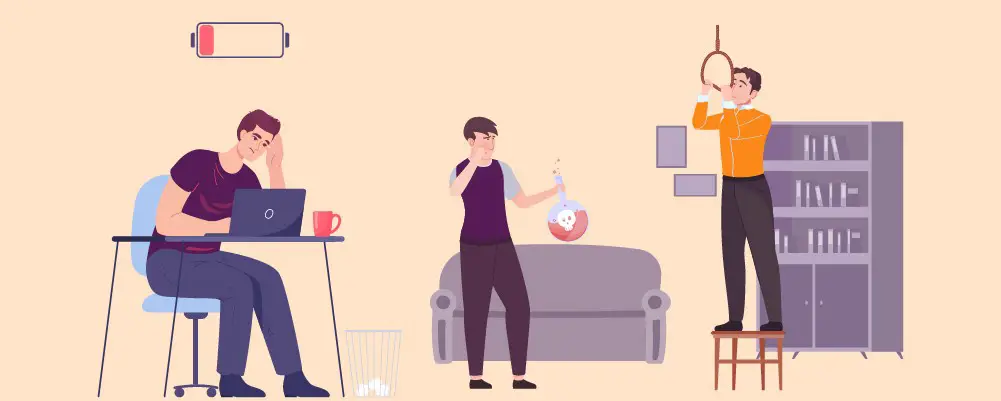
We have discussed how biology and environmental factors could be the reason behind an anxious mind. However, we haven’t discussed what these risk factors are. Here we will change that and discuss what can add to your likelihood of developing a mental health disorder.
Trauma
Trauma is when you experience a deeply disturbing or distressing event. The event made you feel helpless and weak. For many people, the experience of trauma will also ruin their self-confidence and block their ability to understand or feel the depth of their emotions. This is because their brain is trying to protect them from returning to that level of helplessness.
What one person might experience as a traumatic event, another may only see it as unfortunate. In reality, trauma is related to how digested the event in question.
Someone who has experienced trauma will likely develop anxiety as they find it hard to manage emotions and see threats more frequently than neurotypical people.
Build Up Of Stress
If someone has been dealing with stress for an extended period without managing it safely, their mind will eventually buckle under the pressure. Just as a building can only hold up so much weight before it starts to crack, a person can only hold up so much responsibility.
Without being able to relax from the stress, your body will start to show physical symptoms of distress, adding to the pressure.
Other Mental Health Disorders
If you already have a mental health disorder, such as depression, you are more likely to have another, such as an anxiety disorder. This is because many mental health disorders are caused by trauma or a neurochemical imbalance. Many of these factors can cause multiple neurodivergent effects.
Drugs and Alcohol
Miss using drugs can cause a person to become addicted; if you are addicted, you can go into withdrawal. Someone going through withdrawals has the same symptoms as someone going through a panic attack or anxiety disorder. This is because the drugs have affected their neurochemicals, so their ability to absorb serotonin has been hampered.
How To Manage Anxiety Disorder Symptoms
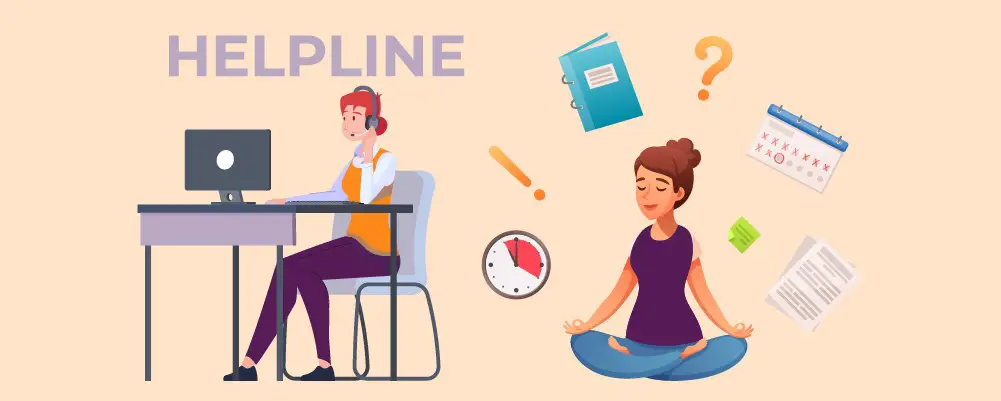
To help you manage your anxiety symptoms, you can try setting out an area of time every day to meditate, work out or write down your worries.
Meditating and working out create the same helpful connection to your body. They help you release any pent-up stress and reconnect safely with your body’s physicality.
Writing down your worries in a journal can help you understand how your mind works. For example, you can see how irrational your thoughts are or see a pattern in how your mind reacts from one week to the next.
Summary
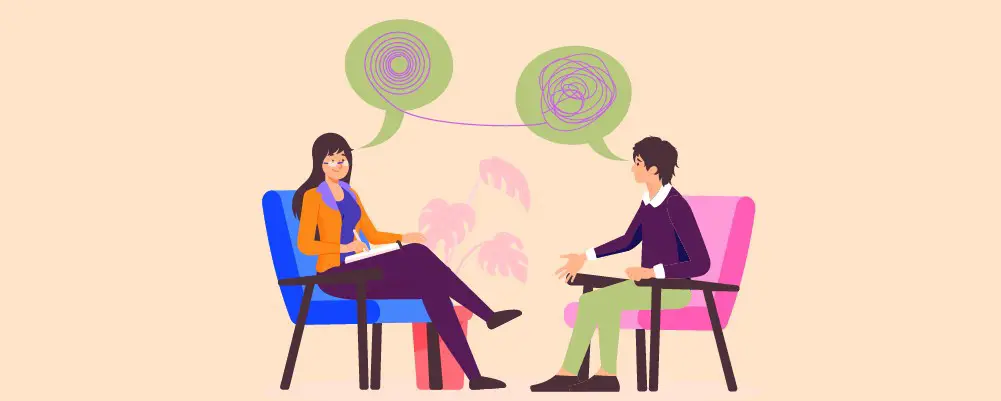
Understanding how an anxiety disorder can affect a person’s physical and mental health can help you recognize anxiety in others. Knowing that separation anxiety presents differently from social anxiety can help you build healthy and safe methods to create a stress-reduced environment.
If you are concerned about yourself or someone else, talk to a doctor or therapist to get more specific help for your circumstances.

- Unveiling the Magic: The Ultimate Guide to Sleep Tinctures - November 1, 2023
- Can You Sleep Standing Up? - October 31, 2023
- Taurine for Sleep: Your Natural Ticket to Tranquil Nights - October 10, 2023
This site contains affiliate links to products. We will receive a commission for purchases made through these links.

